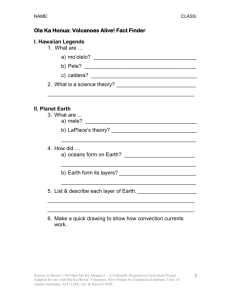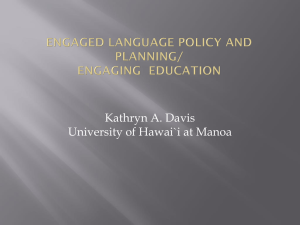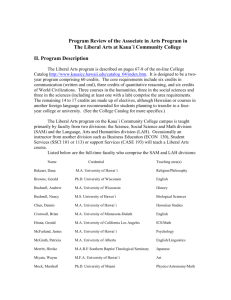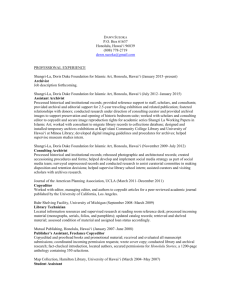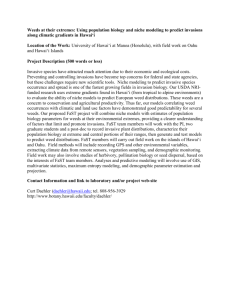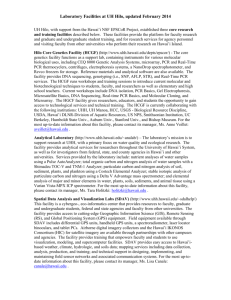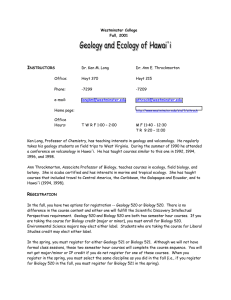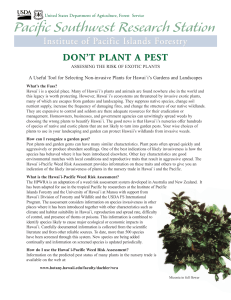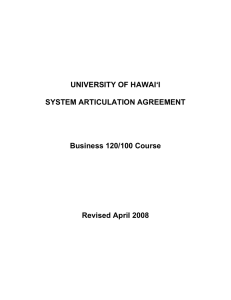here - Assets Hawaii
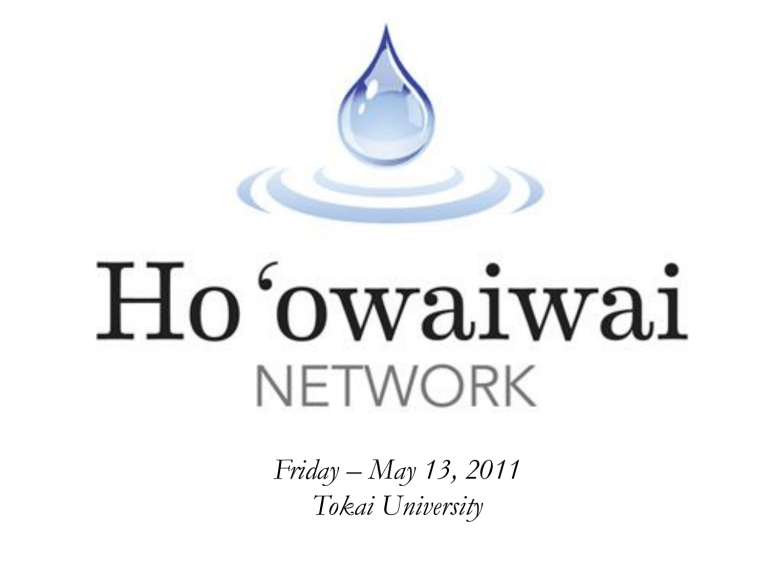
Friday – May 13, 2011
Tokai University
1
Our Big Question #1
A Network Approach
To Asset Building?
2
3 Properties Of Competent Communities
The Abundant Community – John McKnight & Peter Block
Gift-Mindedness – the raw material for community; focus on the gifts of community members.
Associational Life – relationships, the process through which gifts are exchanged.
Hospitality – that which widens our inventory of gifts; offer hospitality, welcome strangers.
3
3
Positive Deviance – Building From Our Gifts
E very community, organization, or social group has individuals whose exceptional behaviors or practices enable them to get better results than their neighbors with the exact same resources.
4
4
The Power Of Networks
Mission – focus on mission, not the organization.
Trust – focus on trust, not control.
Node – focus on being a node, not on being the hub with partners as spokes.
Source for Network Graphic: orgnet.com
5
5
Strengthening Networks . . .
Nurture quality connections so projects can be high risk & high impact
Bridge difference . Connect people and ideas that normally don’t go together
Support overlapping projects or collaborations , many very small, initiated by many
Map the network in order to visualize structure , diagnose strengths and weaknesses, and identify strategies for growing the network
Grow and engage periphery to bring in new resources and innovation
6
Source: Adapted from June Holley, www.networkweaving.com
. Source for Network Graphic: orgnet.com
6
Example – Children’s Savings Initiative
27,000 Hawai‘i Island Children
7
Example – Children’s Savings Initiative
27,000 Hawai‘i Island Children
8
Children’s Savings Initiative
27,000 Hawai‘i Island Children
9
Our Big Question #2
Asset Building – For
Hawai‘i & Hawai‘i
Families? More Than
Just Financial?
10
Our Value Proposition – Asset Building
Assets are essential to:
have financial security against difficult times – the
dignity of choice and control;
create economic opportunities for oneself and family
– realize human potential through education and entrepreneurship ; and
leave a legacy for future generations to have a better life – realistically reduce the cycle of poverty.
11
11
Self Sufficiency
=
Choice & Control
“ Those who are self-sufficient have control and choice over their lives.
Having and keeping control and choice requires an accumulation of a critical mass of social and economic assets, which provide stability and access to opportunities .”
Maurice Lim Miller
12
Hawai‘i’s Asset Building Framework
Make Work Pay (EITC, tax policies)
Teach Asset Building (broad public awareness, schools, workplaces)
Break Down Barriers to Asset Building (asset limits, predatory lending, insurance)
Help People Save (IDAs, children savings accounts, retirement, education)
Help People Start and Own Businesses
(microenterprise, community lending, training)
Help People Buy Homes (government matches and grants, employee assistance)
13
13
Ho‘owaiwai Hawai‘i Island
Building Genuine Wealth
June, 2011
County of Hawai‘i, Department of Research & Development
14
Oikonomia – ‘Ohana Economics
Access to Learning Opportunities
Increase Earning
Opportunities
Increase Family
Assets
Manage Household Expenses &
Reduce Debt/ Risk
Steady Income + Reduce Expense = Opportunity to Increase Assets
Assets = Financial Security, Economic Opportunity, and Future Legacy
15
15
16
Ho‘owaiwai Hawai‘i Island
Policy Action Areas
Earn It Strategies . . .
Financial Education, Planning, &
Management
VITA & EITC
Living Wage Jobs
Anchor Institutions
Keep It Strategies . . .
Financial Services
Matched Savings
Consumer Protection
Access To Transportation Options &
TOD Opportunities
Access To Healthy, Local Food
Sources
Increased Energy Efficiency
Grow It Strategies . . .
Affordable Home Ownership &
Rental Options
Community-Based Investment
Models
CBED, Asset Building, & Regional
Community Development Planning
17
17
Ho‘owaiwai Hawai‘i Island
Implementation Approach
Embedding Asset Building In Local Government . . .
Cities for Financial Empowerment
Involvement, Understanding, & Commitment From All County
Agencies
A Network Approach . . .
Communities are built on connections.
Better connections usually provide better opportunities.
18
18

